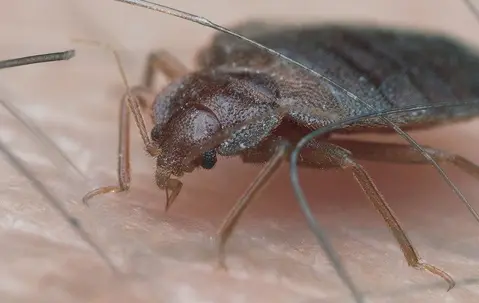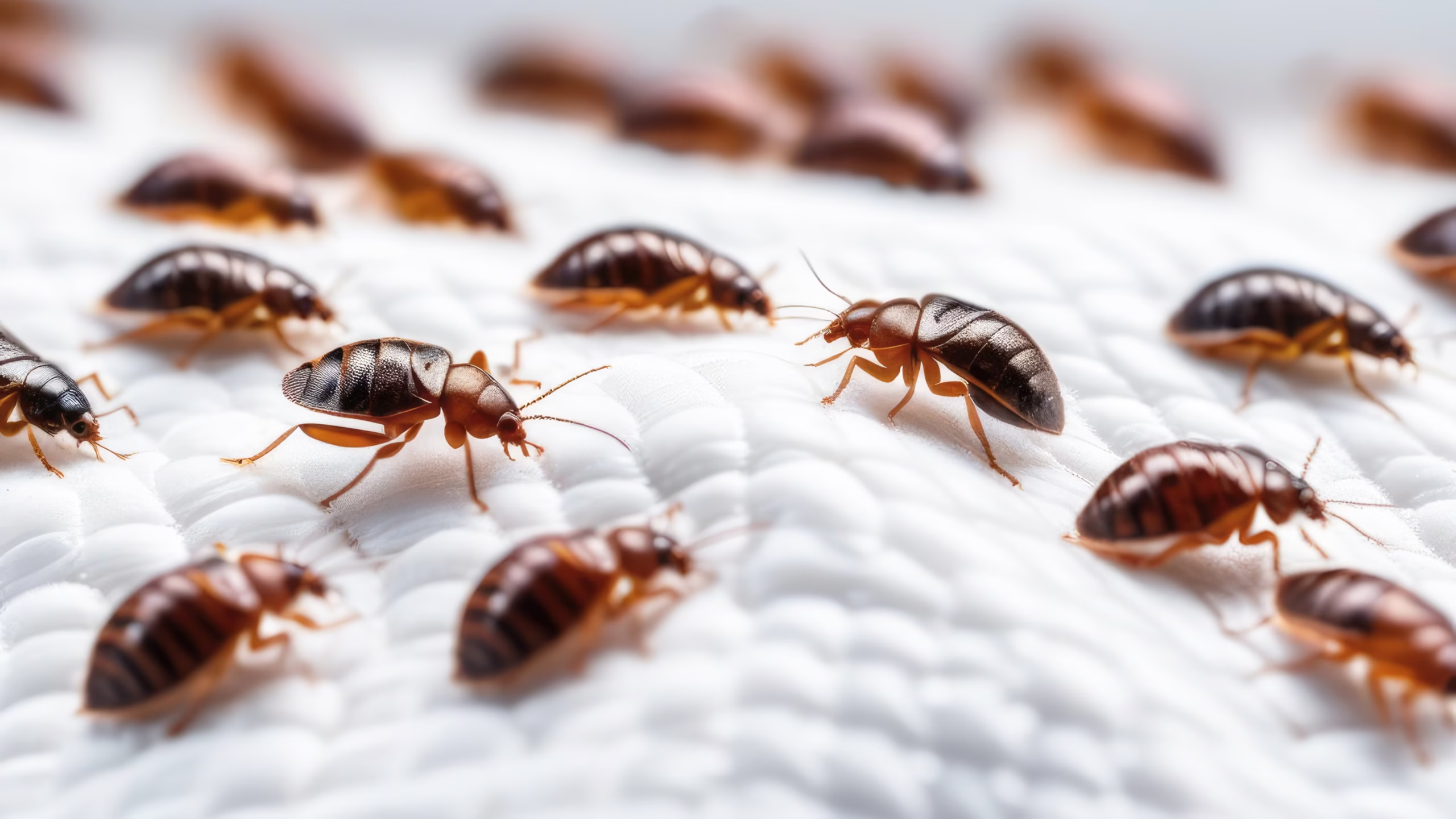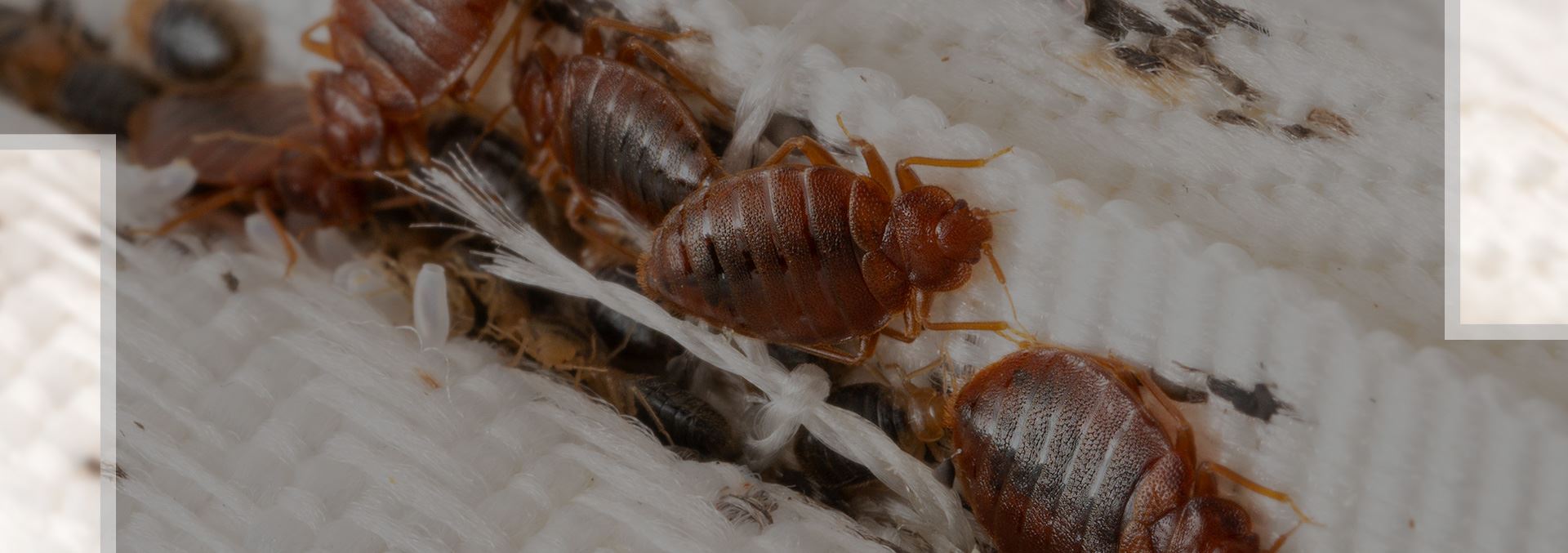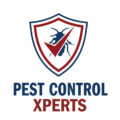Florida’s balmy climate—featuring mild winters, generous humidity, and year-round warmth—creates a near-perfect stage for various pests, including the resilient bed bug. These small, blood-feeding insects primarily target sleeping humans and animals during the night, hiding in seams of mattresses, cracks of furniture, or along baseboards throughout the day. In communities such as Lehigh Acres—where suburban neighborhoods, commercial properties, and short-term rentals intermix—bed bug sightings can escalate rapidly if not tackled decisively. This service page discusses why bed bugs fare so well in Florida, the red flags of an infestation, and why turning to a professional bed bug exterminator remains the most reliable way to restore a safe and restful environment.
Whether you manage a family home in Lehigh Acres or oversee a rental property in Immokalee or Labelle, catching bed bug issues early—and acting promptly—helps prevent occupant distress, expensive cleanups, and the anxiety brought on by stealthy, biting insects.
Why Bed Bugs Flourish in Florida
Warm, Year-Round Temperatures
In colder states, freezing winters naturally disrupt bed bug breeding cycles, but Florida’s mild cold season denies bed bugs that dormancy. Constant indoor temperatures (65–85°F) through heating or air conditioning keep them well within their ideal feeding and reproduction range. Without the seasonal slowdown, bed bugs can expand populations unimpeded.
High Mobility and Traffic
Florida’s tourism, relocation patterns, and general movement of people and belongings allow bed bugs to spread quickly. They hitch rides in luggage, clothing, or secondhand furniture, making places like Lehigh Acres a prime interchange hub. Guests arriving or departing from Immokalee or Labelle can unknowingly transport bed bugs, enabling them to resurface in homes, apartments, or even hotel rooms.
Suburban and Rural Overlap
Areas near farmland or smaller communities like Labelle sometimes see used furniture exchanges, yard sales, or local markets. Introducing secondhand couches, bed frames, or mattresses into your property without inspection can usher bed bugs indoors. Once settled, they breed in concealed cracks and crevices until occupant sightings (or bites) prompt discovery.
Continuous Feeding Opportunities
Bed bugs feed on blood, seeking out people or animals during rest. Florida’s mild climate keeps residents indoors at comfortable temperatures all year, providing these insects with consistent nighttime hosts. A single pregnant female can infest a bedroom, producing multiple eggs daily that hatch in about two weeks if left undisturbed.

Telltale Signs of a Bed Bug Infestation
- Waking with Red, Itchy Bites
- Bed bugs typically bite arms, legs, or neck while occupants sleep.
- Bites may appear in lines or clusters, sometimes causing red welts or mild swelling.
- Bed bugs typically bite arms, legs, or neck while occupants sleep.
- Black Specks or Rusty Stains on Bedding
- Small black droppings (bed bug excrement) can dot sheets or mattress seams, resembling ground pepper.
- Faint blood smears may appear if a bug is crushed after feeding.
- Small black droppings (bed bug excrement) can dot sheets or mattress seams, resembling ground pepper.
- Live Bed Bugs
- Adult bed bugs measure about 5–7 mm (apple-seed sized), oval, and turn reddish after feeding.
- Nymphs are lighter, smaller, and often harder to detect.
- Adult bed bugs measure about 5–7 mm (apple-seed sized), oval, and turn reddish after feeding.
- Eggs or Shed Skins
- Whitish, pinhead-sized eggs cling to hidden surfaces like fabric seams or wood cracks.
- Translucent skins remain after nymphs molt to grow stages.
- Whitish, pinhead-sized eggs cling to hidden surfaces like fabric seams or wood cracks.
- Sweet or Musty Odor
- Significant infestations can produce a faint, sweetish or musty smell from pheromones.
- Rely more on physical evidence (like droppings) for accurate confirmation.
- Significant infestations can produce a faint, sweetish or musty smell from pheromones.
- Complaints in Multi-Unit Settings
- Tenants in apartments, condos, or commercial lodging might report nightly bites or seeing bugs near beds.
- Quick action curtails further spread across units or floors.
- Tenants in apartments, condos, or commercial lodging might report nightly bites or seeing bugs near beds.
The Risks of Ignoring Bed Bugs
Fast Reproduction
A single female bed bug lays several eggs each day, which hatch within weeks. New nymphs mature and reproduce rapidly under Florida’s mild climate, potentially turning a few overlooked bugs into a widespread infestation.
Sleep Disruption and Anxiety
Frequent bites undermine sleep quality, fueling occupant stress and worry over hidden insects. Some residents develop insomnia or obsessive cleaning habits, struggling to confirm if all bed bugs are gone.
Potential Spread to Adjoining Spaces
In multi-family dwellings or businesses, bed bugs can migrate along shared walls or pass through occupant belongings. Failing to address an infestation in one room or unit may spark building-wide issues.
Resource and Financial Burden
Heavy infestations might require discarding mattresses, couches, or other furniture to ensure all bed bugs and eggs are removed. For hotels or short-term rentals, negative guest feedback or online reviews hamper reputation and profits.
Health Considerations
Though not known for transmitting diseases, bed bug bites cause itching, allergic reactions, or secondary infections if scratched extensively. The stigma of bed bugs can also yield emotional distress for occupants or visitors.
Why a Professional Bed Bug Exterminator Is Essential
Comprehensive Inspections
A bed bug exterminator thoroughly checks beds, furniture seams, baseboards, and other tiny cracks where bed bugs hide. Specialized tools or canine scent detection can reveal hidden colonies that owners might miss. Accurate identification and mapping of infestation sites underlie successful treatments.
Multiple Eradication Methods
Professional solutions range from vacuuming and steaming to applying insecticides or heat treatments. By addressing every bed bug life stage—adult, nymph, and egg—these approaches deliver more lasting relief than DIY sprays that might only kill visible bugs.
Heat Treatments
Raising room temperatures above ~120°F exterminates bed bugs at all life stages—eggs included—within a few hours. Professionals typically vacate and seal the treated space, using heat sensors to confirm uniform warming so that no insect can survive in cooler pockets.
Safe, Targeted Chemical Use
Insecticides placed in cracks, corners, or furniture edges kill bed bugs crossing treated surfaces. Unlike random store-bought sprays that risk occupant or pet exposure, professionals apply regulated products precisely, minimizing health concerns while maximizing kills.
Follow-Up and Monitoring
Because bed bug eggs hatch weeks later, many exterminators re-inspect or provide retreatment if occupant sightings persist. They might use interceptors under bed legs or place sticky traps in suspicious zones to confirm successful elimination.

Typical Methods for Bed Bug Treatments
- Property Inspection
- Technicians examine beds, sofas, baseboards, and behind wall hangings for excrement, eggs, or live insects.
- Confirming infestation scope guides whether localized or more comprehensive steps are needed.
- Technicians examine beds, sofas, baseboards, and behind wall hangings for excrement, eggs, or live insects.
- Vacuuming and Steaming
- Before any chemical usage, vacuuming surfaces lifts visible bed bugs and eggs, instantly reducing numbers.
- Steam effectively kills bugs and eggs on contact—especially in seams or upholstery folds.
- Before any chemical usage, vacuuming surfaces lifts visible bed bugs and eggs, instantly reducing numbers.
- Insecticides and Dusts
- Applying residual insecticides along mattresses, box springs, or baseboards kills bed bugs venturing out for blood meals.
- Dusts may be used in wall voids or cracks, providing ongoing protection.
- Applying residual insecticides along mattresses, box springs, or baseboards kills bed bugs venturing out for blood meals.
- Heat Treatments
- For extensive or multi-room infestations, professionals raise internal temperatures to about 120–135°F.
- Occupants typically leave while the process runs—multiple heat sensors ensure lethal levels throughout.
- For extensive or multi-room infestations, professionals raise internal temperatures to about 120–135°F.
- Mattress Encasements
- Zippered encasements trap any remaining bugs inside mattresses or box springs, preventing new harborage.
- Checking encasements for tears or droppings helps monitor for re-emergence.
- Zippered encasements trap any remaining bugs inside mattresses or box springs, preventing new harborage.
- Occupant Education
- Thorough laundering of bedding and clothes on hot settings eliminates leftover bugs or eggs.
- Reducing clutter, sealing cracks, and checking secondhand furniture deters re-infestation.
- Thorough laundering of bedding and clothes on hot settings eliminates leftover bugs or eggs.
- Follow-Up Visits
- Scheduling re-checks a couple of weeks later ensures newly hatched nymphs also face lethal conditions.
- If occupant sightings persist, further spot treatments or alternative measures occur until the infestation resolves.
- Scheduling re-checks a couple of weeks later ensures newly hatched nymphs also face lethal conditions.
Service Areas: Lehigh Acres, Immokalee, Labelle
Bed Bug Treatments in Florida: Exterminator Services for Lehigh Acres
Florida’s subtropical climate—featuring warm temperatures, year-round humidity, and mild winters—provides favorable conditions for various pests, including the notorious bed bug. These blood-feeding insects can infest mattresses, furniture, and baseboard cracks, often entering homes through luggage, clothing, or secondhand items. In communities like Lehigh Acres—where residential development and short-term rentals flourish—the threat of bed bugs escalates if people overlook early warning signs. This service page explores why bed bugs thrive in Florida, the hallmark clues of an infestation, and why contacting a professional bed bug exterminator is usually the most dependable step toward resuming peaceful, pest-free nights.
Whether you own a single-family home in Lehigh Acres or oversee rentals in Immokalee or Labelle, recognizing bed bug behavior—and reacting decisively—protects your household, guests, and property value by preventing full-scale invasions and the stress they bring.
Why Bed Bugs Flourish in Florida
Mild Winters and Constant Warmth
In many other states, harsh winter temperatures reduce bed bug populations as colder weather disrupts their breeding. Florida’s mild cold season rarely forces bed bugs into dormancy. Homes and businesses typically maintain comfortable indoor climates (65–85°F), letting bed bugs feed, reproduce, and multiply without seasonal breaks.
High Resident and Visitor Turnover
Florida’s tourism, relocations, and year-round movement of seasonal visitors allow bed bugs to spread via personal belongings, luggage, or used furniture. Lehigh Acres, near major highways and growing neighborhoods, sees a steady influx of new arrivals or guests who can inadvertently transport these pests. In places like Immokalee—known for its agricultural hubs—or Labelle—blending rural and suburban settings—bed bugs can easily be introduced when farmworkers or travelers bring them along on clothes or bedding.
Suburban and Rural Overlap
Rural-adjacent communities may hold fewer hotels than urban centers, but bed bugs remain a risk in private homes, short-term rentals, or communal housing. Once introduced, bed bugs hide in cracks, seams, or behind headboards, breeding rapidly if there’s no timely occupant or professional intervention.
Resilience and Adaptability
Bed bugs have adapted to feed on human blood primarily at night, evading detection by day in tight, hidden spots. Their eggs adhere to surfaces, resisting many conventional cleaning methods. Without thorough inspection or specialized treatments, bed bugs persist—continuing life cycles behind baseboards, in box springs, or within upholstery folds.
Telltale Signs of a Bed Bug Infestation
- Bites or Welts on Skin
- Bed bug bites often appear on arms, legs, or other exposed areas.
- They can form small, red welts arranged in lines or clusters. While some people experience itching and swelling, others may show little or no reaction.
- Bed bug bites often appear on arms, legs, or other exposed areas.
- Dark Specks or Rusty Stains on Bedding
- Black flecks—bed bug excrement—resemble ground pepper on sheets, pillows, or mattress seams.
- Faint rusty smudges may occur if a bug is squashed post-feeding.
- Black flecks—bed bug excrement—resemble ground pepper on sheets, pillows, or mattress seams.
- Live Bed Bugs
- Adults measure about 5–7 mm, similar to an apple seed, with a flattened, oval body that becomes reddish-brown after feeding.
- Nymphs are smaller and paler but equally eager to feed on sleeping hosts.
- Adults measure about 5–7 mm, similar to an apple seed, with a flattened, oval body that becomes reddish-brown after feeding.
- Eggs or Shed Skins
- Females lay whitish, pinhead-sized eggs in tight crevices around bed frames or corners of furniture.
- As bed bugs grow, they shed translucent skins. Spotting these discarded exoskeletons points to an expanding colony.
- Females lay whitish, pinhead-sized eggs in tight crevices around bed frames or corners of furniture.
- Musky or Sweet Odor
- Large infestations might emit a subtle, musty smell from bed bug pheromones.
- Rely instead on visible clues—bites, droppings, eggs—for accurate diagnosis.
- Large infestations might emit a subtle, musty smell from bed bug pheromones.
- Occupant Complaints in Multi-Room Settings
- In apartments, motels, or multi-bedroom houses, bed bugs can spread quickly if one occupant or guest notices bites but no immediate follow-up action is taken.
- In apartments, motels, or multi-bedroom houses, bed bugs can spread quickly if one occupant or guest notices bites but no immediate follow-up action is taken.
The Risks of Ignoring Bed Bugs
Rapid Population Growth
A single female bed bug lays multiple eggs daily, each hatching in about two weeks. Under Florida’s warm conditions, new generations mature quickly, forming multi-room infestations before residents realize the extent. Prolonged inaction dramatically increases the difficulty and cost of eradication.
Sleep Disruption and Stress
Bed bug bites typically occur at night, disturbing restful sleep and causing anxiety or insomnia. The psychological toll—fear of hidden bugs, constant checking of linens or furniture—can undermine occupant well-being and normal routines.
Potential Spread to Neighbors
In multi-family buildings or closely spaced properties, bed bugs navigate through shared walls or occupant belongings. A single untreated infestation can spread to adjacent units, prompting more extensive building-wide solutions later.
Health and Reputation Concerns
Though bed bugs aren’t known to transmit diseases, repeated biting leads to itching or infections if frequently scratched. For business owners—like those running hotels or rentals in Immokalee or Labelle—bed bug incidents can harm reputations, reduce visitor confidence, and spark negative online reviews.
Resource Drain
Allowing bed bugs to expand often forces repeated laundering, potential furniture disposal, or multiple intense treatments. Addressing them early lowers labor, chemical usage, and occupant distress significantly.
Why a Professional Bed Bug Exterminator Is Essential
Comprehensive Inspections
A bed bug exterminator investigates bedding, furniture joints, baseboards, and hidden cracks for telltale signs—excrement spots, eggs, or live bugs. Accurate detection shapes the treatment scope, whether localized in one bedroom or spread across multiple rooms or units.
Multi-Method Solutions
Professionals combine vacuuming, steaming, insecticides, or heat treatments to attack bed bugs at every life stage. Spot treatments alone often miss eggs or newly emerged nymphs. By integrating multiple methods, exterminators ensure no cluster of bugs remains safe.
Heat Treatments
In severe or expansive outbreaks, raising interior temperatures above ~120°F for several hours eradicates bed bugs, eggs, and nymphs in hidden corners. Occupants typically leave temporarily during the process. Using temperature monitors, specialists confirm lethal heat saturates every crevice.
Targeted Chemical Applications
Residual insecticides in seams and cracks, along with mattress-safe sprays, kill bed bugs crossing treated surfaces. Applied properly by licensed experts, these insecticides minimize occupant or pet exposure while effectively ending hidden infestations.
Follow-Up & Prevention
Because eggs can hatch weeks after initial treatment, many exterminators plan re-checks. Additional spot treatments or occupant guidance ensure newly emerged bugs also face lethal conditions, stopping the cycle. Education on discarding infested furniture or washing linens at high heat further prevents reintroduction.
Typical Methods for Bed Bug Treatments
- Inspection and Mapping
- Technicians study mattresses, box springs, couches, or behind headboards.
- Droppings, eggs, or dark smears mark high-activity zones, driving targeted solutions.
- Technicians study mattresses, box springs, couches, or behind headboards.
- Vacuuming and Steaming
- Vacuuming surfaces and edges collects adults or eggs.
- Steaming at high temperatures kills bed bugs instantly in upholstery or mattress seams, avoiding chemical residues.
- Vacuuming surfaces and edges collects adults or eggs.
- Chemical Insecticides
- Professional-grade sprays or dusts linger in mattress crevices, baseboards, or furniture cracks.
- Bed bugs crossing these zones pick up lethal contact, halting the infestation’s growth.
- Professional-grade sprays or dusts linger in mattress crevices, baseboards, or furniture cracks.
- Heat Treatments
- Large heaters raise the air temperature to bed bug-killing levels, reaching into walls or furniture.
- Occupants vacate during the procedure, returning after safe cooling and thorough inspection.
- Large heaters raise the air temperature to bed bug-killing levels, reaching into walls or furniture.
- Mattress & Box Spring Encasements
- Zippered bed bug–proof covers trap potential survivors inside mattresses or box springs.
- Simplifies monitoring, denies new bed bugs an interior hiding place.
- Zippered bed bug–proof covers trap potential survivors inside mattresses or box springs.
- Occupant Education
- Laundering items on high heat, reducing clutter, and examining secondhand furniture hamper bed bug reinfestation.
- Checking suitcases after travel also prevents future introductions.
- Laundering items on high heat, reducing clutter, and examining secondhand furniture hamper bed bug reinfestation.
- Scheduled Follow-Up
- Re-checks confirm that any late-hatching eggs or missed bugs are eradicated.
- Additional minor treatments, if occupant sightings occur, finalize a bed bug-free result.
- Re-checks confirm that any late-hatching eggs or missed bugs are eradicated.

Service Areas: Lehigh Acres, Immokalee, Labelle
Though bed bugs can appear anywhere in Florida, this page prioritizes solutions in or near Lehigh Acres, a growing community in southwestern Florida. We also offer bed bug exterminator services in:
- Immokalee: Known for agriculture and migrant housing, where occupant turnover and secondhand items can usher bed bugs in unexpectedly.
- Labelle: A quieter area, yet not immune to bed bugs introduced by travelers, used furniture, or multi-family housing.
Under Florida’s climate, bed bugs multiply quickly, feeding on sleeping occupants in stable indoor temperatures. Prompt occupant awareness, combined with specialized professional efforts, remains vital to stopping their spread.
Why Choose Us
Tailored Florida Solutions
We adapt proven bed bug treatments for southwestern Florida’s environment, addressing year-round activity in homes or rentals across Lehigh Acres, Immokalee, and Labelle. Our integrated approaches—like steam plus insecticides—balance occupant safety with bed bug eradication efficacy.
Thorough Inspections
By examining mattresses, bed frames, baseboards, and upholstery meticulously, we isolate bed bug hiding spots, revealing how far they’ve spread. In multi-room scenarios, we evaluate whether local or entire property treatments best address the infestation’s scale.
Safe, Effective Methods
We employ regulated products, carefully placed in seams or cracks where bed bugs congregate. High-heat treatments, vacuuming, or targeted sprays maximize kills while minimizing occupant or pet exposure. This synergy swiftly curbs bed bug populations at every life stage.
Emphasis on Occupant Guidance
Achieving lasting success requires occupant cooperation—washing linens on high heat, encasing mattresses, sealing cracks, and scanning secondhand items. By bridging professional extermination with occupant diligence, we create sustained relief from bed bugs.
Follow-Up Assurance
Because bed bug eggs may hatch weeks after initial visits, we often schedule re-checks or remain available for occupant feedback. Addressing any newly emerged bugs or unexpected sightings ensures truly complete elimination, returning restful nights to your home or rentals.
Next Steps
Noticing mysterious bites in the morning, black spots on sheets, or adult bed bugs scurrying along mattress seams? Contact us to learn more or schedule your service. Our bed bug treatments for Lehigh Acres, Immokalee, and Labelle combine thorough inspections, multi-method extermination, and occupant-friendly instructions, ensuring bed bugs find no safe harbor.
Acting early spares you deeper infiltration, occupant frustrations, and expensive repeated treatments. Rely on our Florida-focused expertise to root out these elusive nighttime pests, restoring peace of mind for your family, tenants, or guests in southwestern Florida’s warm, inviting climate.
Maintaining a Bed Bug–Free Environment
Once we eliminate active bed bugs, ongoing vigilance defends your home or business:
- Frequent Laundry Cycles
- Wash and dry bedding, pillowcases, or blankets at high heat weekly.
- Heat kills any eggs or nymphs clinging to fabrics.
- Wash and dry bedding, pillowcases, or blankets at high heat weekly.
- Mattress & Box Spring Encasements
- Sealing these with bed bug–proof covers prevents new bugs from nesting inside.
- If bed bugs remain, they can’t feed while encased, eventually dying.
- Sealing these with bed bug–proof covers prevents new bugs from nesting inside.
- Minimal Clutter
- Clutter—like clothes piles, cardboard boxes, or spare linens—grants bed bugs added hideouts.
- Organized, clear floors and shelves make early signs more noticeable.
- Clutter—like clothes piles, cardboard boxes, or spare linens—grants bed bugs added hideouts.
- Inspect Secondhand Items
- Look for dark specks, shed skins, or eggs on used furniture, bedding, or clothing before bringing them into your property.
- When uncertain, steam or vacuum thoroughly.
- Look for dark specks, shed skins, or eggs on used furniture, bedding, or clothing before bringing them into your property.
- Check Luggage Post-Travel
- Bed bugs frequently spread via suitcases returning from infested areas.
- Vacuum or hot-dry travel clothes after trips, scanning inside the luggage seams.
- Bed bugs frequently spread via suitcases returning from infested areas.
- Seal Cracks & Gaps
- Fill baseboard gaps, outlet covers, or small wall crevices, especially in multi-family properties.
- Reduces movement possibilities for bed bugs between adjacent rooms or units.
- Fill baseboard gaps, outlet covers, or small wall crevices, especially in multi-family properties.
- Monitor Periodically
- Place interceptors under bed posts or set sticky traps near baseboards if suspicious.
- Quick detection of any new sign allows immediate re-treatment, preventing a fresh outbreak.
- Place interceptors under bed posts or set sticky traps near baseboards if suspicious.
By aligning these protective habits with professional guidance when needed, property owners in Lehigh Acres, Immokalee, and Labelle maintain vigilance against Florida’s bed bug challenges. Florida’s climate may help bed bugs thrive, but decisive occupant action and specialized extermination prove they need not disrupt your home or business’ comfort.
